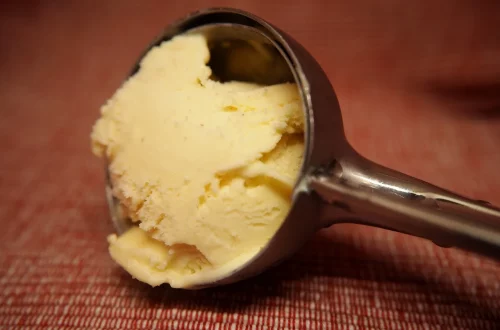
Understanding Fleas from Grass: Prevention and Treatment Tips
Fleas are one of the most common pests that can invade our homes and yards, often causing discomfort and distress for both pets and humans. These tiny, wingless insects thrive in various environments, particularly in grassy areas, where they can easily latch onto unsuspecting hosts. Understanding flea behavior, breeding patterns, and environmental preferences is crucial for effective prevention and treatment. Fleas are not just a nuisance; they can pose health risks to pets and humans alike, triggering allergies, transmitting diseases, and causing skin irritations. As summer approaches and outdoor activities increase, the likelihood of flea infestations rises significantly.
The biology of fleas enables them to reproduce rapidly, with a single female capable of laying hundreds of eggs during her lifetime. This reproductive prowess emphasizes the importance of addressing flea problems promptly and effectively. Fleas can be particularly problematic for pet owners, as they often hitch rides on dogs and cats, bringing them indoors where they can proliferate. In addition to their reproductive capabilities, fleas can survive for long periods without feeding, making them resilient pests. This adaptability, coupled with their ability to hide in carpets, upholstery, and outdoor grass, makes them a persistent threat.
In this article, we will explore effective strategies for preventing and treating flea infestations, ensuring that both your home and your pets remain safe and comfortable.
Identifying Fleas and Understanding Their Lifecycle
To effectively combat a flea infestation, it’s essential to understand what these pests are and how they live. Fleas are small, dark brown or black insects that measure about 1/8 inch in length. They are known for their incredible jumping ability, which allows them to leap up to 200 times their body length. This feature aids in their movement from host to host, making it easy for them to infest pets and homes.
Fleas undergo a four-stage lifecycle: egg, larva, pupa, and adult. The adult flea lays eggs on the host animal, but these eggs often fall off into the environment, where they can hatch into larvae. Larvae are small, worm-like creatures that feed on organic debris, including adult flea feces, which contains undigested blood. After several molts, larvae spin cocoons and enter the pupal stage, where they can remain dormant for weeks or even months, waiting for the right conditions to emerge as adult fleas.
This lifecycle is crucial for understanding flea control. For example, treating only the adult fleas on your pet will not eliminate the problem if eggs and larvae remain in the environment. Therefore, a comprehensive approach is necessary to break the lifecycle at all stages. Regularly inspecting pets for fleas, vacuuming carpets and furniture, and washing pet bedding can help in identifying and reducing flea populations.
Flea bites on humans can lead to itchy welts and allergic reactions, while pets may experience severe itching, hair loss, and even skin infections due to excessive scratching. Recognizing these signs early can prevent a minor issue from becoming a significant infestation.
Effective Prevention Strategies for Fleas
Preventing flea infestations is far more effective than dealing with them after they occur. One of the key strategies in prevention is maintaining a clean environment. Regularly vacuuming carpets, rugs, and upholstered furniture can help remove flea eggs and larvae. Pay special attention to areas where pets spend time, as these are likely hotspots for flea activity. After vacuuming, ensure that you dispose of the vacuum bag or empty the canister outside to prevent any surviving fleas from re-entering your home.
In addition to indoor cleaning, outdoor maintenance is crucial. Keeping your yard well-manicured by mowing the grass regularly and trimming shrubs can significantly reduce flea habitats. Fleas thrive in tall grass and shaded areas, so keeping your lawn short and sunny can deter them. If you have pets that frequently roam outside, consider creating a designated area for them to play that is free from tall grass and debris.
Another effective prevention method is the use of flea control products for pets. Consult your veterinarian to determine the best flea prevention treatment for your animal, which may include topical treatments, oral medications, or flea collars. Regularly administering these treatments can prevent fleas from establishing themselves on your pets in the first place.
Furthermore, consider treating your home and yard with flea control sprays or powders. Products containing insect growth regulators (IGRs) can disrupt the flea lifecycle, preventing eggs and larvae from developing into adults. Always follow the manufacturer’s instructions and ensure that the products are safe for use around pets and children.
Lastly, be cautious when introducing new pets into your home. Ensure they are flea-free before bringing them into your living space to prevent introducing new fleas into an already controlled environment.
How to Treat Flea Infestations Effectively
If you already have a flea infestation, addressing it promptly and thoroughly is essential. Start with a comprehensive approach that targets all areas where fleas may reside, including your pets, home, and yard.
Begin by treating your pets with an appropriate flea treatment. Consult your veterinarian for recommendations on effective products that suit your pet’s age, weight, and health condition. These treatments can include topical medications, oral pills, or flea collars that kill adult fleas and prevent new ones from emerging.
After treating your pets, it’s crucial to tackle the environment. Vacuum your home thoroughly, focusing on carpets, rugs, furniture, and any areas where your pets spend time. Dispose of the vacuum bag or empty the canister outside to eliminate any fleas or eggs that may have been collected.
Consider using steam cleaning as an additional measure, as the high temperature can kill fleas at all life stages. Pay special attention to pet bedding, which should be washed in hot water and dried on high heat to eliminate any potential eggs or larvae.
In your yard, treat the grass and soil with flea control products. Look for sprays that target adult fleas and disrupt the lifecycle of any remaining eggs or larvae. It may be necessary to reapply these treatments regularly, especially after heavy rain or if you live in an area prone to flea infestations.
Finally, monitor your pets and home for signs of fleas even after treatment. If fleas persist, you may need to consult a pest control professional who can provide targeted treatments and advice tailored to your specific situation.
Natural Remedies for Flea Control
For those who prefer a more natural approach to flea control, several remedies can be effective in reducing flea populations. These methods can be used alone or in conjunction with conventional treatments for a comprehensive strategy.
One popular natural remedy is the use of diatomaceous earth (DE). This fine powder, made from the fossilized remains of tiny aquatic organisms, can be sprinkled in areas where fleas are likely to hide. When fleas come into contact with DE, it dehydrates them, ultimately leading to their demise. Always choose food-grade diatomaceous earth, as it is safe for use around pets and children.
Another natural solution is the use of essential oils. Oils such as lavender, peppermint, and cedarwood can repel fleas. However, essential oils must be used with caution, particularly around pets, as some oils can be toxic to animals. Diluting essential oils in a carrier oil or using them in a diffuser can help create a flea-repelling environment.
Herbal flea collars are another option for pets. You can create a homemade collar by soaking a cloth strip in a mixture of water and a few drops of essential oils known to repel fleas. Ensure the collar is comfortable for your pet and monitor for any signs of irritation.
Lastly, introducing flea-repelling plants into your home or garden can also be beneficial. Plants like rosemary, mint, and marigold not only beautify your space but can help deter fleas due to their natural properties.
While natural remedies can be effective, they may not provide the same level of protection as commercial products. It’s essential to monitor your pets and home closely and combine strategies for the best results.
In conclusion, fleas are a persistent problem that requires proactive measures for prevention and effective treatment. By understanding their lifecycle, implementing preventive strategies, and knowing how to treat infestations, you can keep your home and pets flea-free. Always consult with professionals when in doubt, and remember that the best approach combines multiple methods for comprehensive control.
**Disclaimer: This article is for informational purposes only and does not constitute medical advice. Always consult a veterinarian for health-related concerns regarding your pets.**




